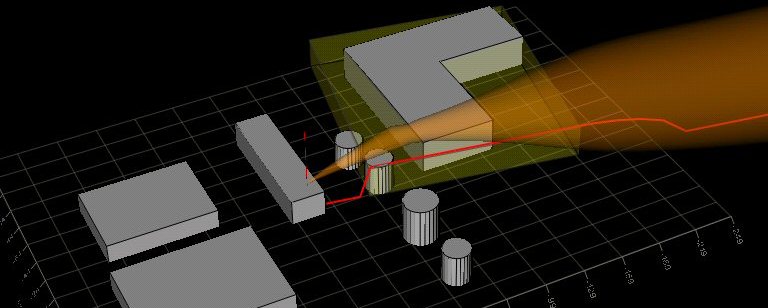
In 2010, the Environmental Protection Agency (EPA) published a new document in its series of Air Guidance (AG) documents, Air Dispersion Modelling from Industrial Installations Guidance Note (AG4). The purpose of the guidance is to provide a common approach for conducting air dispersion modelling by setting out the requirements for doing so for environmental licensing and compliance in Ireland.
Why use dispersion modelling?
The underlying objective of dispersion modelling is to estimate the potential impact of an installation’s process emissions on the air quality in the surrounding environment.
Dispersion modelling may also be used to assess the level of risk associated with emissions, e.g. when assessing whether an emission should be considered as a main emission (in the context of an environmental licence application or following a change at an installation), or when developing a bypass response procedure where an emission has been abated. In the event of a bypass scenario occurring, air dispersion modelling can be a useful tool in quantifying the significance of the emission, in accordance with the EPA’s Protocol for the Bypass of Air Emissions Abatement Equipment.
Air dispersion modelling techniques can also be used to assess the potential impact from accidental releases that originate from within a building (or other enclosed space) and which are subsequently discharged to atmosphere, e.g. through an extraction point. Modelling such emissions is typically beyond the capabilities of consequence modelling software. However, air dispersion modelling, combined with an assessment of building downwash, can prove valuable in identifying the areas of a site that may be susceptible to the impacts from such accidental release scenarios, and in quantifying the impacts.
Effect of downwash on a plume
Dispersion modelling may also be used to assess the level of risk associated with emissions, e.g. when assessing whether an emission should be considered as a main emission (in the context of an environmental licence application or following a change at an installation), or when developing a bypass response procedure where an emission has been abated. In the event of a bypass scenario occurring, air dispersion modelling can be a useful tool in quantifying the significance of the emission, in accordance with the EPA’s Protocol for the Bypass of Air Emissions Abatement Equipment.
Air dispersion modelling techniques can also be used to assess the potential impact from accidental releases that originate from within a building (or other enclosed space) and which are subsequently discharged to atmosphere, e.g. through an extraction point. Modelling such emissions is typically beyond the capabilities of consequence modelling software. However, air dispersion modelling, combined with an assessment of building downwash, can prove valuable in identifying the areas of a site that may be susceptible to the impacts from such accidental release scenarios, and in quantifying the impacts.
Effect of downwash on a plume

Key data requirements
The EPA’s guidance document identifies the key input data required for conducting advanced modelling and provides guidance on how this data should be sourced. The specific data requirements for a particular site will depend on the nature of the emission and the risk to the air quality, but will typically include: meteorological data (for a minimum of 3 years); geophysical data (terrain and land use); and the dimensions and locations of site buildings and structures.
The guidance document emphasises how poor quality data inputs to models will result in inaccurate model outputs, i.e. garbage in garbage out. Since all models are subject to uncertainty, the Agency recommends that sensitivity analysis is undertaken by varying key input parameters (e.g. volumetric flow rate, building downwash) and assessing the impact on model outputs.
Byrne Ó Cléirigh provides a comprehensive range of dispersion and consequence modelling services.
The guidance document emphasises how poor quality data inputs to models will result in inaccurate model outputs, i.e. garbage in garbage out. Since all models are subject to uncertainty, the Agency recommends that sensitivity analysis is undertaken by varying key input parameters (e.g. volumetric flow rate, building downwash) and assessing the impact on model outputs.
Byrne Ó Cléirigh provides a comprehensive range of dispersion and consequence modelling services.
